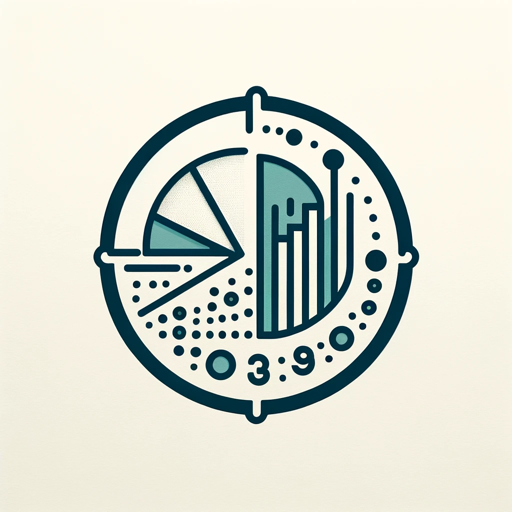Formula 1 (F1) Predictions and Analysis-Formula 1 race predictions
AI-powered insights for F1 enthusiasts
Predict the outcome of the next F1 race.
Explain the strengths of a specific F1 team.
Analyze a driver's performance this season.
Discuss the characteristics of an F1 track.
Related Tools
Load More
Football Predictions Expert
Expert in football predictions, advising on European leagues and more

AI Sports Analyst
Sports event predictor with a focus on data analysis and trends.

SportsPredictor
I combine advanced machine learning with up-to-the-second information to predict the outcome of sporting events.

Sports Prediction AI
NBA AI Predictions and real-time betting odds - by Mysports AI

Football Predictions
Tailored, authoritative soccer predictions

Tipster AI
"Expert in sports betting with precise analysis for a winning bet."
20.0 / 5 (200 votes)
Introduction to Formula 1 (F1) Predictions and Analysis
Formula 1 (F1) Predictions and Analysis is designed to provide insights, forecasts, and detailed assessments related to the world of Formula 1 racing. It leverages historical data, current season statistics, driver and team performance metrics, and track-specific information to deliver probabilistic predictions and comprehensive analyses. By examining trends and patterns, the system helps users understand the likely outcomes of races, team strategies, and driver performances. For instance, it might analyze past performance at a specific circuit to predict how well a driver might perform in an upcoming race, or it could evaluate a team's progress over a season to forecast their championship prospects.

Main Functions of Formula 1 (F1) Predictions and Analysis
Race Outcome Predictions
Example
Predicting the top three finishers of the upcoming Monaco Grand Prix based on historical data, current season performance, and qualifying results.
Scenario
A user wants to place a bet on the Monaco Grand Prix and uses the system to understand which drivers have the highest probability of finishing on the podium, considering factors like previous performances at Monaco, recent form, and qualifying positions.
Driver Performance Analysis
Example
Analyzing Lewis Hamilton's performance trends over the last five seasons to assess his chances in the next few races.
Scenario
A sports journalist is writing an article about Lewis Hamilton's potential to break a new record. They use the system to gather detailed statistics on his past performances, including win rates, pole positions, and lap times, to provide a data-driven perspective.
Team Strategy Insights
Example
Evaluating Ferrari's pit stop strategies and their impact on race outcomes in the current season.
Scenario
A team strategist uses the system to refine their approach to pit stops by analyzing how Ferrari's strategy has affected their race results. This includes looking at the timing of pit stops, the choice of tire compounds, and the average time spent in the pit lane.
Ideal Users of Formula 1 (F1) Predictions and Analysis
Betting Enthusiasts
Betting enthusiasts can leverage the system to make informed decisions on race outcomes, driver matchups, and other betting markets. By using data-driven predictions, they can enhance their chances of making successful bets.
Sports Journalists and Analysts
Journalists and analysts benefit from the system by accessing detailed performance metrics and insights that enhance their reporting. They can provide richer content by including data-backed analyses of races, drivers, and teams.
Team Strategists and Engineers
F1 team strategists and engineers use the system to gain competitive advantages through better understanding of rival teams' strategies, driver performance under various conditions, and optimal race strategies. This helps in making real-time decisions during races.

Guidelines for Using Formula 1 (F1) Predictions and Analysis
Visit aichatonline.org for a free trial without login, also no need for ChatGPT Plus.
Start by accessing the platform to take advantage of the free trial offered, which requires no login or subscription to ChatGPT Plus.
Familiarize Yourself with the Interface
Navigate through the user-friendly interface to understand the various sections available, such as race predictions, driver analysis, and track insights.
Input Relevant Data
Enter specific data points or queries related to upcoming races, teams, or drivers. This helps the tool to generate more accurate predictions and analyses.
Review Predictions and Analysis
Carefully read through the generated predictions and analyses, which are based on historical data, current performance metrics, and track conditions.
Utilize Insights for Decision Making
Apply the insights gained for various purposes such as betting, writing detailed articles, or enhancing your understanding of F1 strategies and dynamics.
Try other advanced and practical GPTs
Investing Stocks & Shares Dividend Advisor
AI-Powered Stock Dividend Insights

KalvinThien AI - SEO FULL WEBSITE
AI-powered SEO content at your fingertips

Mock Interview Coach
AI-Powered Mock Interviews for Job Success

Red bubble SEO Generator
AI-powered SEO for Redbubble designs
Advisory Board v. 1.1
Your Virtual Council of Experts

Brainstorm Generator
AI-Powered Ideas for Your Projects

Resumen Inteligente
AI-Powered Summarization for Clarity and Efficiency

Formula Generator
AI-powered formula generator for all disciplines.

The Analyser Web
AI-powered analysis for data-driven decisions

AI-Enabled PowerPoint Maker Pro with Chatbot
Create stunning presentations with AI power

Your TT Ads Strategist
AI-powered guidance for TikTok advertising.

甲方乙方双角色博弈画海报
AI-driven poster design tailored to your needs

- Strategy Planning
- Performance Metrics
- Race Predictions
- Driver Analysis
- Track Insights
Detailed Q&A about Formula 1 (F1) Predictions and Analysis
What data does the F1 Predictions and Analysis tool use to generate its insights?
The tool uses a combination of historical race data, current season performance metrics, weather conditions, and track-specific information to provide comprehensive predictions and analyses.
Can this tool predict the exact outcomes of F1 races?
While the tool offers highly informed predictions based on various data points, it does not guarantee exact outcomes due to the unpredictable nature of live sports events.
How often is the data updated in the F1 Predictions and Analysis tool?
The data is updated regularly to ensure that predictions and analyses reflect the most current information, including recent race results and any changes in team or driver performance.
Can the tool be used for academic research in sports analytics?
Yes, the tool is highly valuable for academic research as it provides detailed insights and analysis which can support various studies in sports analytics, performance analysis, and predictive modeling.
Is the tool suitable for casual fans who are not deeply familiar with F1?
Absolutely. The tool is designed to be accessible for both casual fans and experts, providing clear and insightful information that can enhance anyone's understanding and enjoyment of F1.